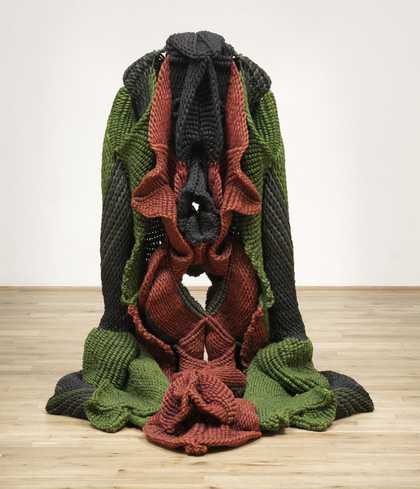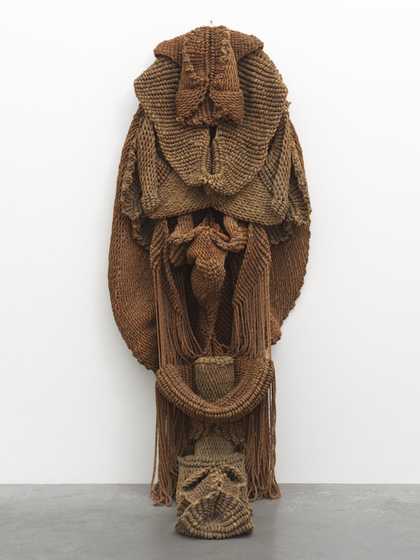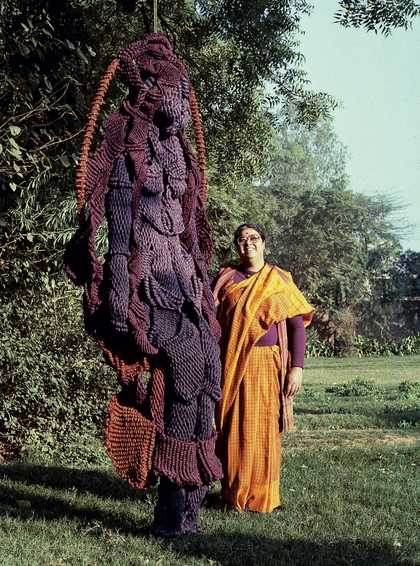Discover the extraordinary sculptural forms of Mrinalini Mukherjee, who transformed an everyday materials into artworks
Mrinalini Mukherjee’s parents were well-known artists and teachers. Growing up with the intellectual and artistic community of Santiniketan in Bengal, she was schooled in debates about local knowledge and modern art. She studied painting in Baroda (Vadodara) with the artist K.G. Subramanyan, who championed Indian craft traditions.
When Mukherjee turned to sculpture, she rejected conventional materials and techniques associated with studio practice. She began to work with hemp rope. Weaving and knotting, she created complex shapes and folds that often resemble flowers or the body. Her early works such as the wall-mounted Ritu Raja 1977 were made from rope woven from hemp in two shades, the natural colours of the material accentuating the sensual forms. The title in Bengali refers to a ‘king of seasons’, usually the fertile spring. The title of Jauba 2000 refers to the hibiscus flower. In this later work, hemp dyed in brilliant colours is manipulated into flower-like forms around freestanding metal armatures, almost human in scale.
‘I work emotionally and intuitively and do not like analysing my feelings during the work process’, Mukherjee said. There are rich references in her work and titles to mythology and folklore, while her exploration of sexuality and the body suggests a strong feminine perspective. She was one of a number of women artists whose work established that textiles and fibres, which were traditionally associated with crafts, could be just as important as the materials conventionally associated with fine art.
É«¿Ø´«Ã½



